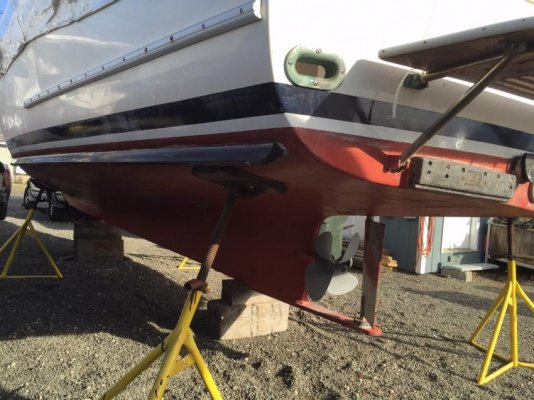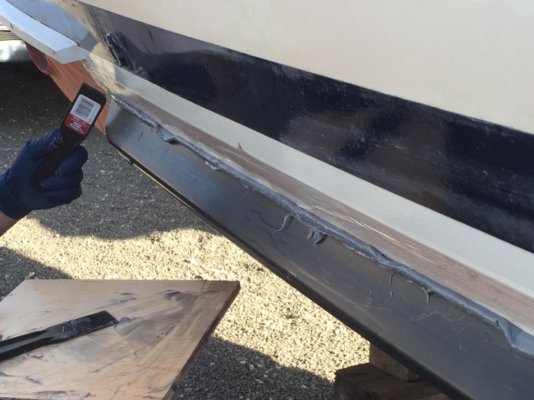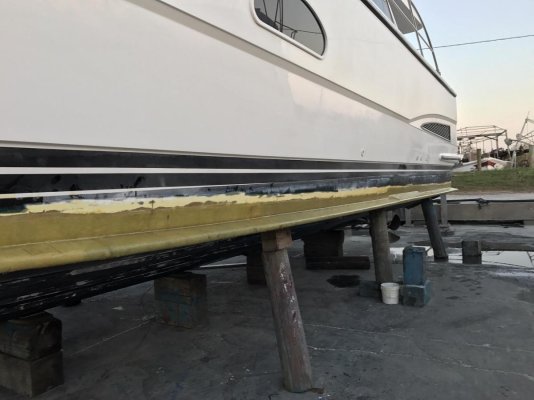Wxx3
Dauntless Award
- Joined
- Jan 10, 2013
- Messages
- 2,820
- Location
- USA
- Vessel Name
- Dauntless
- Vessel Make
- Kadey Krogen 42 - 148
Bruce,
Well with a boat about to broach the windward side is trying to push her over and given a normal hull she gets knocked down on her side. Given a fairly low CG she just lays on her side or slides down the face of the wave. But with a stab fin pointlng down like AusCan’s boat all should be well. But w a fin sticking out at 30-45 degrees off a hard chine (like the boat in the link) providing a brake on the boat about as low as possible the CG and windage will be in control of the boat more or less deciding if she’s going to trip on her chine and the chock fin. Never heard of it happening but the threat or posibility of it happening is very real.
A very good point.
And while I didn't think of it, I read worried enough about the unknown that I decided against them.
By this time, (when i made the decision against) I'd had enough experience in very large beam seas, 20 to 25 feet, that I decided to stick with what i knew worked and got me to Ireland safe and sound.
If they were that beneficial, then every bost would have them.
Also, they seem very popular on work boats in areas with drying harbors.
Making it easier to work on your own hull.
Had i planned on staying in NW Europe, I was contemplating a stilt system.



